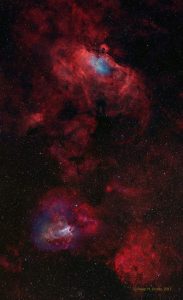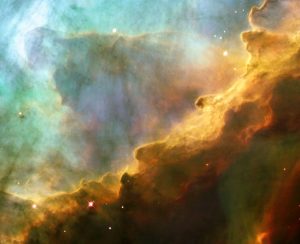Nebulosa Cigno
L’Aquila e il Cigno
Questa fantastica coppia di nubi, la Nebulosa Aquila e la Nebulosa Cigno, è solo parte di un vasto complesso ricco di gas e polveri all’interno del quale nuove stelle vengono alla luce e illuminano i loro dintorni. Continua a leggere
La Tempesta Perfetta
Come la furia di un mare in tempesta, questa immagine del telescopio Hubble mostra un oceano ribollente di gas nella massiccia e luminosa nebulosa molecolare Messier 17. L’immagine riprende solo una piccola regione all’interno di Messier 17, una culla dove nascono stelle. Conosciuta anche come Nebulosa Omega, o Nebulosa Cigno, è localizzata a circa 5500 anni luce dalla Terra nella costellazione del Sagittario. Continua a leggere

